Landwards
The professional journal for the Institution of Agricultural Engineers

See iagre.org
Practice – Conference preview
People – Saying goodbye
Profession – Apprenticeships explainer
People – Award winners’ big idea


The professional journal for the Institution of Agricultural Engineers

See iagre.org
Practice – Conference preview
People – Saying goodbye
Profession – Apprenticeships explainer
People – Award winners’ big idea


launched in partnership between the Institution of Agricultural Engineers (IAgrE) and the Society for the Environment is the new grade of Registered Environmental Practitioner (REnvP).
This is a huge step forward to ensure high standards of professionalism and proven competence are met by those working to enhance and protect the environment across every sector.
This registration is timely and relevant for agricultural engineering and the associated technology sectors and the intention is that professionals in the industry will apply. The industry includes many different disciplines which need people to apply a professional approach and the Registered Environmental Practitioner grade is ideal for this.
Why should I register?
• Improve your career and salary prospects
• Stand out from the field
• Join a network of dedicated professionals
• Demonstrate your competence and skills.
Register through IAgrE now:
t: +44 (0) 1234 750876
e: membership@iagre.org
w: www.iagre.org
Although the standards are high, IAgrE makes the process simple.
“The launch of REnvP is a landmark moment for environmental professionalism, providing more individuals with the opportunity to gain professional registration and achieve external verification of their competence.”
Dr Emma Wilcox Chief Executive Officer of the Society for the Environment
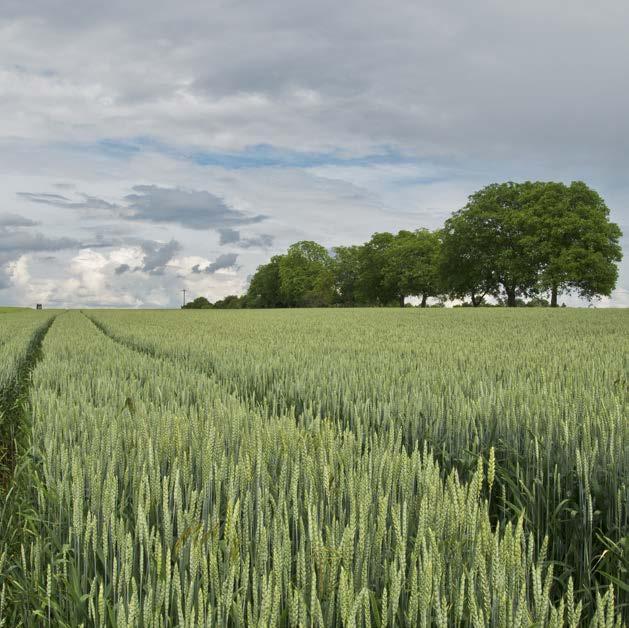



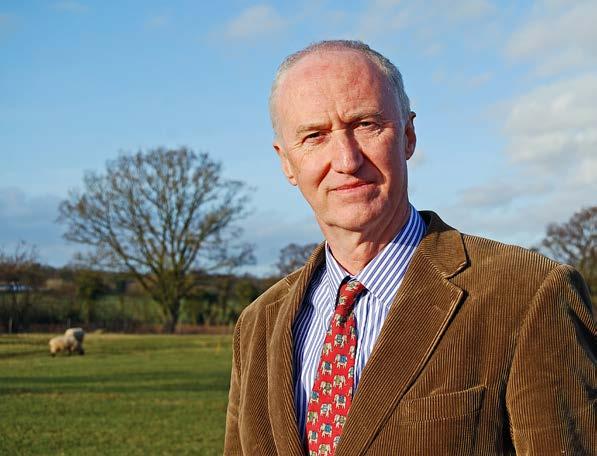
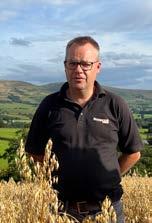
If you are an existing Associate Member you have the option to upgrade to Member grade providing you have completed 5 or more years in a relevant career.
However, if you prefer, you can remain as an Associate Member for as long as you wish.
For more information please see https://iagre.org/upload/1621421462.pdf or contact Alison at membership@iagre.org
Scanning the pages, as Landwards comes together can be positive experience, always a chance for reflection and sometimes challenging. The Autumn edition is no exception.
As a younger engineer, I found it odd when my elders and betters in the Institution referred to IAgrE as our professional family. I’m not sure I truly understood. Yet, as with all things in life, it’s become clearer.
In this context I would like to mention my own shock, followed by a feeling of profound loss, hand in hand with very fond memories of Professor Simon Blackmore. He was warm, passionate and a strong advocate for what he believed in, more of this from page 28.
Elsewhere in Landwards, it’s clear that
the Institution has a global reach and the ability to influence and support those in our wider family. Profession from page 30 is a great example of how professionalism and mutual support extend beyond our own shores.
There is lots more in this edition to whet your whistle from the exciting world of agricultural engineering.
I’ll leave the reflection on this edition to you. Please get in touch if you would like to share your thoughts?
Andy Newbold Hon FIAgrE Editor andy@farm-smart.co.uk
The IAgrE was honoured to have the opportunity to interview Chairman and CEO of global agricultural machinery company AGCO Eric Hansotia, for a recent Landwards podcast.
In conversation with the editor, Andy Newbold, Eric started from an upbringing on a family dairy farm in the States to the top job with AGCO, by way of a career in engineering. Eric discusses how engineers who make great products always listen and learn.
He stresses the importance of getting close to farmers and understanding their problems, whilst giving away his ‘secret sauce’ tip for engineers.
“Deliver excellence, and stay flexible”. Eric says.
The podcast also discusses the thinking behind the companies technology and innovation focus, just how much AGCO has invested in R & D and how its being spent. Alongside this, is a thoughtful discussion about the adoption of technology and how innovation becomes native.

Have a listen
Head to; https:// www.buzzsprout. com/1067353/15584554 for the full edition.
Farmers Weekly machinery editor Oli Mark has won the IAgrE award for the best article or broadcast highlighting the vital role of engineering in modern food and energy production.
The British Guild of Agricultural Journalists award is kindly sponsored by the Institution of Agricultural Engineers, the professional body for engineers, scientists, technologists, and managers in the land-based sector.
It was presented at the Guild’s Bangers and Beer reception at the Cereals Event on Tuesday, June 11, by CEO Charlie Nicklin.
Oli’s article, ‘NI farm turns slurry and food waste into bio-LNG fuel‘, published in Farmers Weekly, detailed the world’s first small-scale
production facility for renewable liquified natural gas. The project is unique because it is housed on a dairy farm, transforming waste materials into a zero-carbon fuel.
The runner-up was freelance journalist and former Farmers Guardian editor Emma Penny, who wrote a feature assessing the use of alternative fuels for agricultural vehicles.
Her feature, published in Farmers Guardian, entitled, ‘Carbon neutral haulage drives on-farm opportunities’ assessed the
increasing use of technology to power HGVs, including all-electric and hydrogen powered vehicles to help increase environmental credentials and drive down the industry’s carbon footprint.
Charlie Nicklin praised the quality of the content submitted, adding: “We were surprised and thrilled with the amount of people that entered this year. Congratulations once again to Oli and Emma.”
The winners shared a £1,500 prize pot.
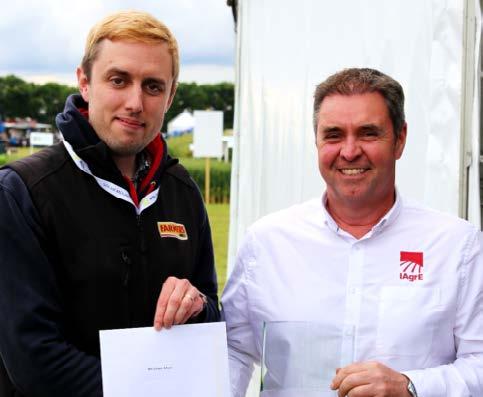

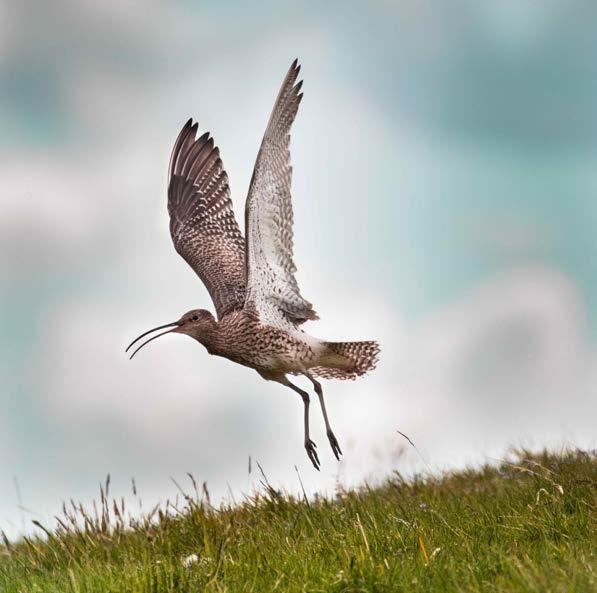
Researchers from the Game & Wildlife Conservation Trust (GWCT) Wales have developed a new and highly advanced drone technique that is revolutionising practical curlew conservation by allowing them to locate the nests of this elusive wader and work with farmers to protect the chicks from being killed by machinery or predators.
The drone work has been developed by GWCT over five years of surveying various species across Wales, including deer, brown hare, grey squirrels, feral goats, grey seals, partridge, terns...and curlew!
Using a combination of thermal and zoom cameras operated from a drone, the nests can be located very quickly and accurately, while causing no disturbance to the birds.
GWCT conservationists and curlew experts James Warrington and Katie Appleby have spent the breeding season working with farmers, locating and protecting curlew and other wading bird nests, and moving chicks to safety before they harvest crops or cut fields.
Curlew numbers in Wales have declined sharply and it is predicted that it may become extinct as a viable breeding population within 10 years.
To help curlew, GWCT is part of a 3-year partnership project called ‘Curlew Connections Wales’, which aims to locate and monitor breeding curlew by working with farmers and the local community to find and protect nests from predation, alongside conducting predation management, across three sites in Wales.
Through this work in Montgomeryshire and North Radnorshire, the GWCT has been able to show the viability of drones as a research tool that causes no disturbance to adults and importantly, leaves no scent trails that can lead predators to the nests, proving the success of methodology that we have been developing for five years.
GWCT staff have also built relationships with many farmers over the years and are regularly called upon to offer this service
as a practical conservation tool. Working with farmers, through the Trust’s Curlew projects, has been paramount to the development of this research as they allow GWCT Wales access to their land and show a passionate interest in and actively take part in the conservation work. Without farmers none of this research would have been possible, or as successful as it has been.
James Warrington, GWCT Projects Officer for Wales, explains: “Curlew nests are notoriously hard to find as adults rarely fly directly to the nest but opt to land away from the area and walk in slowly and usually through cover.
“To pinpoint nests through ground observation takes a lot of time, hours or days, as observers need to calculate approximate areas where the nest may be and then search that area, this leaves trails and scent that predators can see, smell and use.
“Using the drone, we can find a nest in five minutes without setting foot in the field.
“Our team can then help farmers to protect located nests with electric fencing, move any chicks from fields where work is about to take place, or carry out other important conservation or predation management work.
“Not only does this save us a lot of time to get on with other important tasks, but the farmer can also get on with the hay cutting knowing no curlew chicks are being harmed.”
The GWCT Wales drone team is now working on expanding the technology and liaising with external partners to develop AI recognition of individual species from the air. The team is also due to commence upland bird surveys in the north of England, and will follow curlew
chicks and adults ringed this summer to their coastal wintering grounds to monitor them there.
Hours of footage and images collected will also be analysed by researchers trying to learn more about the nesting curlews’ habitat.
“By studying the patterns in the fields made by the chicks, which are only visible in aerial shots, we can look at how far they are to water, hedges and other features that offer cover,” James explains.
“It will also help us understand how avian predators see the landscape and work out where chicks are. Having this knowledge is the first step in figuring out how to better protect curlew from corvids and raptors.”
GWCT’s Director for Wales, Lee Oliver, says: “The results of all our surveys using the drone have been exceptional.”
The drone technology being used is the most advanced available, and includes thermal camera, zoom camera, and laser range finder with pin-point location function.
Because GWCT Wales’s drone has 200 times zoom, it does not have to be directly above the nest area and can be in a neighbouring field. The still images shown here were taken from 60 meters in altitude and 100 meters away from the nest.
With the laser range finder on the drone a point can be placed on the hand controller screen, and from that we get very accurate location co-ordinates. This then enables researchers to walk directly to a nest using a handheld GPS device.
“It has taken years to get to where we are now,” says Lee.
Charlie Nicklin CEng FIAgrE

As many of us expected, we now have a new Government, with Sir Kier
Starmer at the helm.
Historically Labour have never done Agriculture many favours, and coming from a family of farmers there is no shortage of opinions on the subject! IAgrE is of course politically neutral so I will refrain from any political comment either way. I would however like to congratulate IAgrE Member Dr Brian Mathew on his achievement of becoming the newly elected Lib Dem MP for Box and Colerne, Wiltshire. With such a churning of seats in Parliament, the Royal Academy of Engineering is in the process of pulling together a list of professional
engineering body members who are now elected MP’s. By providing the group with useful engineering sector material, we hope to enable them to communicate a more consistent message into the Westminster policymakers. Very little was mentioned about Agriculture and Horticulture in Labour’s manifesto, so it is essential our sector push at every opportunity the importance of the industry in providing sustainable food production and food security.
On the theme of food production and sustainability, hopefully you will have seen our communications for the annual conference which will be held at Rothamsted Research Centre in Hertfordshire on the 6th November. This year we’ve got an interesting mix of high profile stakeholders and industry professionals who are going to tell us what their disciplines need out of agricultural engineering. The intention is not to focus on the challenges, but look to how solutions can be enabled with a collaborative system-based approach. Please do have a look at the website if you wish to know more about the presenters and subjects. Booking is now live and please do forward to those outside IAgrE that may find it of interest.
Unlike Cereals 2023, where we basked in glorious sunshine, this year’s Hertfordshire event held in mid-June was rather wet! It did eventually brighten up, but it didn’t really help the footfall and it felt like the attendance was very much down on the previous year. Given the nervousness in and around the sector at the moment, it was probably of no surprise. This year has seen a number of machinery dealers go out of business and manufacturers slowing production lines and tightening the purse strings. On a positive note, IAgrE’s attendance at Cereals is of course to present our awards to the British Guild of Agricultural Journalists. Each year our panel review published articles submitted
on the application of engineering within the land-based sector, and this year’s winner was Farmers Weekly machinery editor Oli Mark for his excellent article on a Northern Ireland farm that is turning its slurry and food waste into bio-LNG fuel.
An important part of IAgrE’s operational remit is of course professional registration, we pride ourselves in tailoring the process and making it straightforward for our members to achieve. To further aid applications we’ve produced five short videos which talk you through the process from start to finish. The first video explains what registration is, the different levels and why you’d want to do it. The subsequent videos talk you through a detailed application, including educational requirements, competency assessment and the final professional review interview, providing you with examples along the way. If you’re not registered then now’s a perfect time to have a look at the videos and make a start on your application. If you are interested, then please do get in touch with Alison at;
membership@iagre.org
Technicians are an important part of our industry and behind the scenes IAgrE support them where we can, whether its talking to students, helping colleges and ensuring apprenticeships are fit for purpose. The land-based engineering apprenticeships standards have undergone a significant update and we have subsequently re-approved the level 3 qualification as meeting the requirements for EngTech registration. It would be great to get more industry acceptance of professional registration and membership at technician level, but it continues to be a slow burn! For those of you that will employ future land-based engineering apprentices, the significant change is that the apprentice must now do the
level 2 before the level 3, although the duration remains the same, as if they had done the old level 3 only. The excellent news off the back of this is, that the funding for the two levels is now combined, lifting it from the previous £21k for level 3 to £30k. This is a real positive step in the midst of the funding challenges surrounding FE level education.
Continuing on the theme of
technicians and agricultural engineers, I was asked to attend the AgriTechE’s 10th birthday celebration back in June. For some light hearted fun, the team ran a fantasy farm dream team event where I and six other associated industries were invited to do a 3 minute pitch to the audience, who were advised to be future farmers. In each of our pitches we had to get across why our discipline was essential to a farm. My pitch was for agricultural engineers and
technicians, and you’ll be pleased to know that I came joint second after the agronomist! The audience clearly understood my plea on how essential engineers and technicians are to agriculture, and that it doesn’t simply happen on its own.
Charlie Nicklin CEng FIAgrE ceo@iagre.org
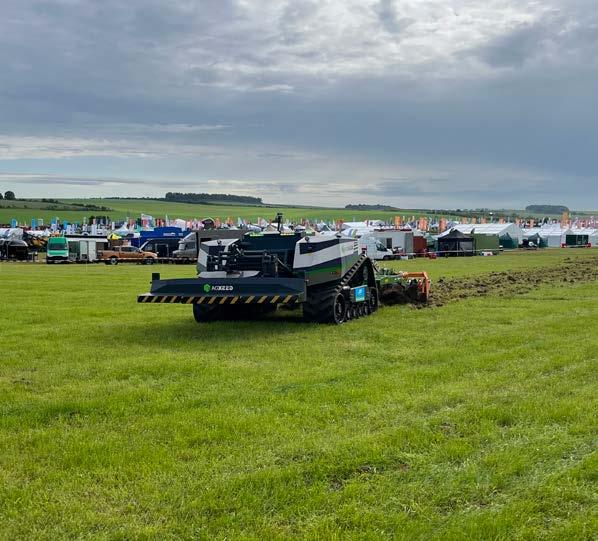
Mark Moore

A great deal has happened since my last musings, but I sense the thing that is on everyone’s mind is the current downturn in the agricultural machinery sector.
The CEMA business barometer, which is a measure of business confidence across Europe, firmly places the farm machinery sector in the recession category. In response to ongoing economic challenges, several leading machinery manufacturers have announced measures to reduce costs including
layoffs. This has been attributed to falling crop prices and rising production costs. However, the dynamics of our industry are still very positive – we need farmers to produce food so people can eat, and those farmers need mechanisation and technology to produce food in a sustainable way for a growing population. For example, the global harvester market is expected to grow over the next 5 years by $23.3 billion, or about 8% annually. As my wife keeps telling me – “we don’t need to buy a new car, or go on holiday, but we do need to go to the shops and buy food.”
It appears the farmer protests leading up to the European elections had some influence as farmers expressed frustrations over cheap food imports and increased regulations linked to policies such as the Green Deal and Farm to Fork.
I’m sure this was one of the reasons the president of the European Commission, Ursula von der Leyen, launched the strategic dialogue on the future of agriculture with the aim of adopting a more open and inclusive approach to food security. The conclusions of strategic dialogue were published in June, and perhaps one of the most important conclusions was the need for a food systems approach that encompasses all actors in the food chain.
This has led to the EU Commission forming a focus group called the EU Agri-Food Chain Observatory (AFCO), and the first meeting was held in July. I am very pleased to report that agricultural engineers have a seat at the table and are providing input to help enable the systems approach the strategic dialogue concluded to be an essential part of the future of agriculture. This inclusive approach by the EU Commission is very welcome because it will allow us as agricultural engineers to have a voice to ensure informed decisions are being made about agricultural innovation and technology, and its deployment.
The other significant thing that has happened is a change in the political landscape with the results of both the UK and European elections. In Europe the centre-right parties won a majority, and Ursula von der Leyen was re-elected as president of the European Commission by the European Parliament. As a result, agriculture and reform of the Common Agricultural Policy (CAP) seems to be high on the agenda of the EU Commission. It was evident that election manifestos put more focus on food security and less on green issues. This change in priorities is probably no big surprise given Russia’s brutal invasion of Ukraine, and other geo-political tensions such as China’s growing role in technology and conflicts in the Middle East.
However, the EU is still committed to green policies, and laws such as soil health and natural restoration will remain in place. But there is
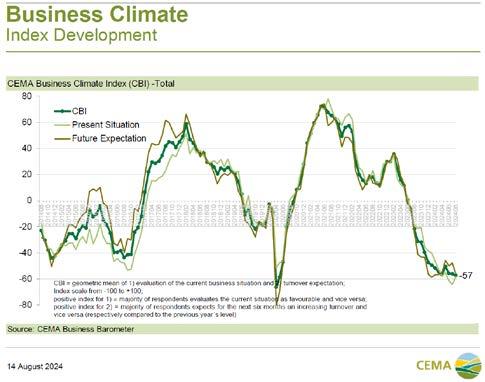
probably going to be a new balance struck between sustaining farm incomes and the environmental objectives in CAP. This new balance is linked to conclusions from the strategic dialogue and the resulting discussions in the EU agri-food chain Observatory (AFCO). I think it’s important to recognise that many of the stakeholders within AFCO are looking to us as engineers to design and develop the technology that is required to achieve the balance between food security using sustainable farming practices, and ensuring farming remains profitable. At the heart of this will be systems engineering – which was a key conclusion from the strategic dialogue. I am optimistic that we can increase the impact we can have by contributing our opinions and knowledge in these on-going discussions. It will be interesting to see the
level of engagement of the new UK government. During the election campaign there was little mention of agriculture, and it appears there will not be much diversion from the existing sustainable farming incentive (SFI). Post election, most of the discussion relates to the environment with the announcement of a rapid review of the Environmental Improvement Plan (EIP), which will be completed by the end of the year so the UK can deliver legally binding targets to save nature. So far, I have not sensed the UK government is looking for input from agricultural engineers, which contrasts with the EU Commission. But it’s early days so let’s wait and see.
In conclusion, it is evident the landscape is changing, which provides many opportunities for
agricultural engineers. I would urge all of you to get involved as this clearly will have to be a team effort given the enormity of the challenge. The IAgrE conference “Why we need agricultural engineers” in November is an opportunity to get involved and to start thinking about innovation and systems engineering. A range of speakers from the food supply chain will present their vision and requirements. Our role is to think about how we can innovate to meet these requirements, and equally importantly, how we join up innovation into systems so technology such as precision farming becomes common place on farms.
Dr Mark Moore FIAgrE
Biosystems Engineering
Volume 241, May 2024, Pages 95-112
Effects of airflow disturbance from a multi-rotor unmanned aerial vehicle (UAV) on fruit tree frost protection
Baiyu Qiao, Lingxiao Wang, Hu Han, Zhan Huang, Yongda Lin, Zongkai Jia, Hongyuan Nie, Xiongkui He and Yajia Liu. College of Science, China Agricultural University, Beijing, 100193, China
Hebei Academy of Forestry and Grassland Science, Hebei, 050067, China Shenzhen DJI Technology Co., Ltd., Shenzhen, 518052, China
Highlights
• A multi-rotor UAV is used to test frost protection performance on fruit trees.
• The temperature field characterizations are obtained.
• The anti-frost effectiveness of UAV intervention is confirmed.
Frost in fruit trees that occurs in spring severely impacts the growth and development of trees and fruit set. Therefore, exploring the temperature change rules of fruit trees during spring frost events is important to develop new management options with emerging technologies, such as UAVs. This study used a T40 UAV as the test vehicle based on the air disturbance frost prevention principle. The airflow field change pattern under the UAV was explored using the computational fluid dynamics simulation method, and the reliability of the multi-rotor UAV in frost prevention was verified using field tests. Setting the UAV height at 6.0 m above the ground and the rotor speed at 1000 r min−1, the temperature of the uppermost layer began to decrease first, and then the temperatures of the other layers exhibited a certain decreasing trend. Once a certain value was reached, the temperature rapidly rose and stabilised within 20 s. The
Biosystems Engineering, owned by the IAgrE, and the official scientific journal of EurAgEng, is published monthly with occasional special issues.
Head to https://www.sciencedirect.com/ journal/biosystems-engineering to view the full article list of the latest edition and to find out more about depth and breadth of articles accepted for publication.
Reduced subscriptions are available to IAgrE members. Go to https://iagre.org/ biosystemsinformation for details of the preferential rates for both paper and electronic versions.
Over the past three months (May 2024 –July 2024), Biosystems Engineering published 37 articles. The following three articles, one from each volume, have
results of the field test also showed that when the fruit trees reached the critical frost temperature at the flowering stage, UAV intervention could have a substantial effect on the warming of the near-surface layers. The canopy layers that had sub-zero temperatures and that were at most risk of frost achieved a warming of 2.5 °C–3 0°C.
The CFD simulations and field trials demonstrated the effectiveness and reliability for multi-rotor UAVs for frost protection with fruit trees. This study provides a reliable method for mitigating frost using UAVs, which serves as an important theoretical and guiding basis for managing frost disasters, especially in small-holder agriculture.
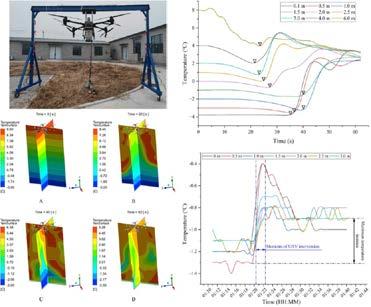
Figure: Top left - Temperature change tests of the T40 UAV suspended on a lifting frame under a hovering state; Bottom Left - Contour of the simulated transient temperature field at different altitudes under the effect of UAV airflow perturbation at different time steps (0 - 62 seconds); Right hand side – Simulated (top) and measured temperature changes of different air layers showing the temperature rise in colder (near surface) air layers.
been chosen to illustrate the diversity of work in the journal, although in this case we do showcase two different applications of CFD to agri-biosystems..
Biosystems Engineering
Volume 242, June 2024, Pages 16-28
Heuristic cooperative coverage path planning for multiple autonomous agricultural field machines performing sequentially dependent tasks of different working widths and turn characteristics
Riikka Soitinaho, Vili V¨ayrynen and Timo Oksanen
Technical University of Munich, Chair of Agrimechatronics, Germany
Aalto University, Department of Electrical Engineering and Automation, Finland
Highlights
• The problem of sequentially dependent coverage path planning is presented.
• Sequentially dependent coverage tasks are performed simultaneously on the same area.
• A novel algorithm for solving this problem for two autonomous tractors.
• The algorithm solves and schedules non-conflicting paths in real-time online.
• Successful collision-free completion of autonomous operation in a field test.
Coverage path planning (CPP) is a central task in agricultural field operations, such as tillage, planting, cultivation, and harvesting. In future visions, manual operation will be replaced by fleets of autonomous agricultural vehicles that perform the tasks autonomously. A step towards this transition is to enable simultaneous and safe cooperation of autonomous vehicles on the field. In this article a novel approach is presented for CPP for two autonomous tractors that perform sequentially dependent tasks simultaneously on the same area. The approach is based on the idea of computing the coverage solutions for each task by dividing them into short paths that consist of a swath and a turn. The approach ensures collision avoidance by examining that the simultaneous short paths, operated by different

tractors, do not collide geometrically, and then schedules them to be operated simultaneously in real-time.
In this article, an algorithm for cooperative coverage path planning for multiple agricultural field machines performing sequentially dependent tasks was presented and demonstrated. It was shown in a real-world field test that the algorithm was able to perform two sequentially dependent agricultural coverage tasks simultaneously on the same area, in real-time. In the field test, a rectangular area of 0.8 ha was processed by two tractors. The first tractor was equipped with a disk cultivator and the second tractor was equipped with a seed drill. Both tractors completed all the swaths in the demonstration with the two tractors working simultaneously (on nearby swaths/headlands) for 38.6 % of the time without any collision risks.
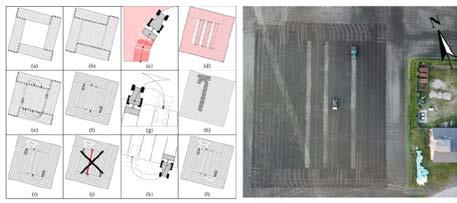
Figure: Left - Basic idea of the algorithm to calculate the headland swaths (a) and mainland swaths (b), update the covered area (c), update the available swaths for the 2nd tractor (d), optimise the next swaths (e), choose the best swaths (f), calculate the final turn path for the 1st tractor (g), exclude the path of the 1st tractor from the turn area of the 2nd tractor (h), check for collisions (i and j), calculate the final turn path for the 2nd tractor (k), and perform final collision check and routing (l); and Right – the two autonomous tractors in operation in the field simultaneously cultivating and then seeding the field.
Biosystems Engineering
Volume 243, July 2024, Pages 111-122
CFD simulation of air distributions in a small multi-layer vertical farm: Impact of computational and physical parameters
Luyang Kang, Ying Zhang, Murat Kacira and Twan van Hooff
Department of the Built Environment, Eindhoven University of Technology, the Netherlands
Department of Agricultural and Biological Engineering, University of Florida,, FL, USA
Department of Biosystems Engineering, University of Arizona, AZ, USA
Highlights
• Literature review on computational settings in CFD simulations of indoor farming.
• Validation of RANS CFD simulations including a crop response model.
• RNG k-ε turbulence model outperformed the other two-equation turbulence models.
• First-order upwind discretisation scheme showed large discrepancies.
• Influence of the momentum sink of lettuce canopy on the air distributions is limited.
Computational fluid dynamics (CFD) simulations have been extensively used in designing air distribution systems for controlled environment agriculture (CEA). In recent years, more application studies using CFD simulations can be found for vertical farms due to the increasing interest in indoor vertical farming systems. However, it is well-known that CFD simulations are sensitive to many computational parameters and settings. The requirement of a crop response model in the CFD simulation for a vertical farm makes it even more complicated. Despite increased interest, guidelines for CFD simulations in vertical farms are scarce. Therefore, a systematic sensitivity analysis was conducted for a small generic multi-layer vertical farm with a sole source lighting. The impact of a wide range of computational and physical parameters was investigated, including grid resolution, turbulence model, turbulence intensity, discretisation scheme, drag coefficient of the crops and computational time. The analysis showed that in this case the RNG k-ε turbulence model outperformed other commonly used two-equation turbulence models. Compared to the experimental results from the literature, the simulation results from the first-order upwind scheme showed large discrepancies, especially on a coarse grid. Although the influence
of drag coefficient on the airflow inside the crop canopy was pronounced, little difference was observed in the air distributions in the vertical farm away from the crops.
This paper provided a detailed and systematic analysis of the impact of several computational parameters and boundary conditions on the numerical simulation of air temperature and velocity distribution in a small vertical farm. It should be mentioned that this study specifically examined a vertical farming chamber of wall-in size. In order to properly evaluate real-world
applications and systems, a case-by-case approach is indispensable, as it allows for a comprehensive examination of the specific circumstances involved. In addition to considerations for the selection of turbulence model, boundary conditions, crop characteristics, grid independence, the computational time and speed must be considered, assuming an acceptable accuracy is achieved for a given model selected. However, the results showed that modelling and optimisation of air-flow in vertical farms is possible with CFD methods.
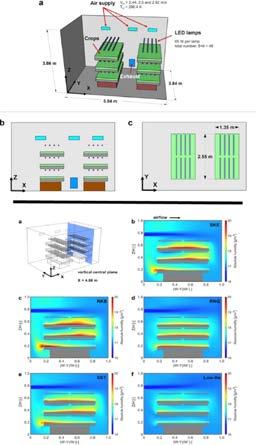
• Provides a comprehensive overview of the challenges facing agri-food supply chains, including the need to be more sustainable considering the high environmental costs of global distribution
• Addresses the external factors that can impact the logistics and performance of supply chains, including political developments, international conflicts and pandemics such as COVID-19
• Reviews the main agri-food supply chains used in different regions around the world, focussing on those implanted in the Americas, Europe, Africa, Asia and the Middle East
The global population is projected to increase by more than a third, or 2.3 billion individuals, between 2009 and 2050. This surge in population will significantly impact food demand, particularly for income-sensitive food crops such as meat, dairy products, and vegetable oils.
The agri-food supply chain (AFSC) is a critical component of global food security, encompassing the entire process from production to consumption.
However, unbeknownst to many, AFSCs are increasingly complex and challenging and require innovation through the advent of sustainable practices, technological advancements and strategic planning to ensure food safety, quality and availability.
A new book – Frontiers in agri-food supply chains: Frameworks and
case studies – takes a considered approach to detailing the recent developments across the sector which support the changing demands placed upon agri-food supply chains.
“This volume – edited by a trio of agri-food supply chain experts –delivers a very useful overview of how agri-food supply chains can help tackle current challenges related to climate change, sustainability requirements and the need for sufficient healthy food,” says Professor Jack van der Vorst, Wageningen University & Research in The Netherlands.
Technological advancements play a crucial role in enhancing AFSC efficiency. The integration of digital technologies such as the Internet of Things (IoT), blockchain, big data, and sensor technologies has shown promise in optimizing supply chain operations, ensuring data transparency, and improving traceability.
But not all AFSCs are the same and different regions bring forth different challenges and benefits from different innovations.
For example, the diversity of consumption patterns and the significant contributions of different activities across the supply chain highlight the complexity of Asia’s AFSCs. Challenges such as food safety, climate change, and geopolitical conflicts necessitate state-led interventions and the adoption of agri-food tech ecosystems to enhance supply chain resilience.
Whereas, improving AFSCs in Africa involves addressing challenges related to infrastructure, climate change, and market access. Implementing fair investment policies to attract green infrastructure investments and integrating global value chains are essential for enhancing food security and economic growth in the region.
“We probably live in one of the most interesting times to study agri-food supply chains,” says Professor Sander de Leeuw, Chair in Operations Research and Logistics at Wageningen University and Research, The Netherlands and co-editor of this new book.
“This book aims to provide a foundation for understanding these complex systems and inspire further exploration into making agri-food supply chains more efficient, resilient and sustainable,” he adds.
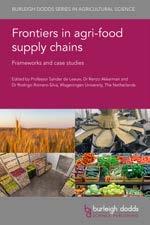
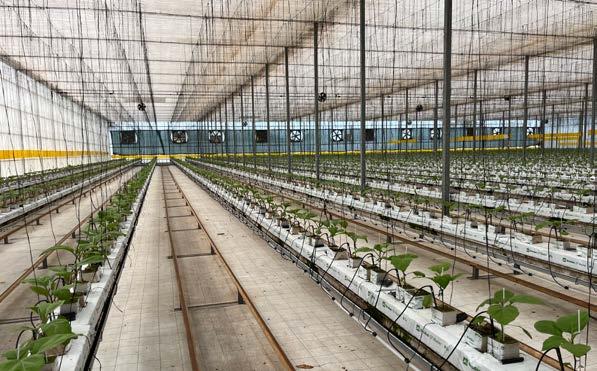
The conference field trip visited a 1Ha hydroponic controlled environment experimental greenhouse growing tomatoes, cucumbers and aubergines
The AgEng2024 conference at the Agricultural University of Athens, the historic capital city of Greece, was a great opportunity to keep abreast of the latest global and European agricultural engineering research. Secretary General Andy Newbold reports.
The theme of Agricultural Engineering challenges in existing and new agroecosystems attracted over 300 delegates, representing 34 countries. With 230 plus oral presentations and 120 poster papers over four days in July, the congress was the place to be.
Keynote paper
Outgoing EurAgEng president Professor Dr Barbara Sturm, Professor for Agricultural Engineering in bioeconomic Systems at the Leibniz Institute for Agricultural Engineering and Bioeconomy (ATB), welcomed delegates to the conference. The conference keynote paper
was presented by Dr Peter Demeyer, Environment Technology Group Leader, Flanders Research Institute for Agriculture, Fisheries and Food (ILVO), entitled AgEngScience4IMPACT: the compelling case of livestock emissions in the EU. Peter said “We are active in a complex field with high uncertainties.”
Parallel streams
With five parallel sessions throughout both conference days, there was plenty to choose from. Themes included:
• Assessment and mitigation of gaseous emissions from livestock farms
• AI Applications in speciality crops
• Smart crop farming and precision agriculture
• Post harvest technologies and losses
• Sustainable production in farm buildings
• Energy and bioenergy
• Integrated and sustainable farming systems
• Fossil free livestock farming
• Automation, robotics and sensor technology
• Circular economy
• Soil, land and water engineering
• Artificial intelligence, data processing and management
The conference kicked off with the Young Professional Network (YPN) of EurAgEng hosting a satellite event for the first day, attended by around 40 members.
The keynote was entitled Harvesting Robots: situations & challenges and ably presented by Dr Coral Ortiz from the Rural and Agrifood Engineering Department, Universitat Politecnica de Valencia in Spain.
This event was a first for the Young Professional Network at an AgEng conference and was very well received by all participants.
Networking opportunities
Despite the heavy workload of multiple sessions and FOMO (Fear Of Missing Out) there was ample opportunity to sample the best of Greek hospitality starting with a welcome reception outdoors in the Universities outdoor museum.
Conference dinner was a real highlight at a downtown Athens roof top restaurant with views
across a floodlit Acropolis and the cities night time skyline.
The conference concluded with a day of field visits to a low carbon footprint research greenhouse with 1Ha of hydroponic cultivation. This was followed by a visit to the first bioclimatic winery in Greece.
Summary
If you haven’t considered attending an AgEng conference, please do. Irrespective of your field of expertise, it plugs you into an international network and fellowship of supportive professionals.
Congratulations to the convenor, Prof. Nikolas Katsoulas and the Hellenic Society of Agricultural Engineers for organising such an excellent conference.
The 81st International Conference on Agricultural Engineering LAND. TECHNIK will be held in Osnabrück, Germany on the 6th to 7th November 2024.
Professor Nikos Katsoulas of the University of Thessaly, Greece is Director of the Laboratory of Agricultural Constructions and Environmental Control. He was inaugurated as President of the European Society of Agricultural Engineers at the AgEng2024 conference in Athens in July.

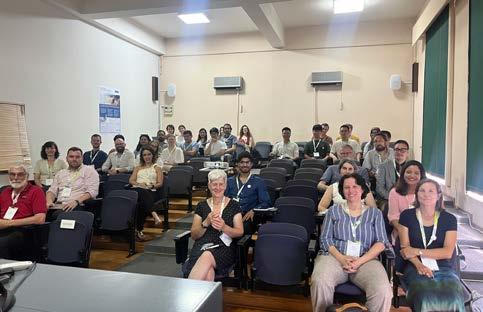
for an AgEng conference.
Registration videos launched
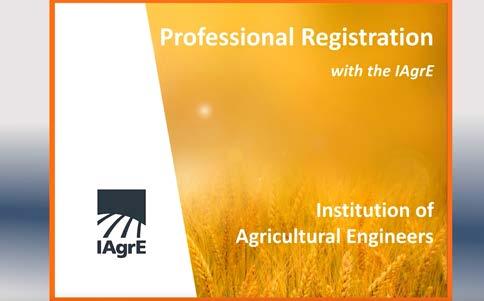
To help and guide through professional registration
IAgrE has recently launched a series of five short videos intended to help and guide applicants through the process of professional registration.
The videos cover key aspects of the professional journey to registration and how membership of the Institution of Agricultural Engineers will support this.
Each of these short videos gives a succinct summary and practical advice as follows:
• Video 1 – What is professional registration
• Video 2 – How to complete an application
• Video 3 – How to fill in the Competence statement
• Video 4 – How to fill in an Individual Route Assessment (IRA)
• Video 5 – How to prepare for a Professional Review Interview (PRI)
“ Many people are daunted by the thought of the process, and how much time it will take. The purpose of these videos is to dispel those myths and explain how straightforward it is to achieve professional registration through the IAgrE” comments Charlie Nicklin, CEO
These videos explain the expectations on the applicant in submitting a successful application. They show what the Institutions assessors expect of the applicant and their submission.
Context specific
The videos include some examples of the sort of content which the assessors would like to see, depending on the situation of the applicant.
Have a look
All the videos can be found on the IAgrE website or YouTube channel.
If you would like further information on professional registration head to;
https://iagre.org/professionalregistration
and please get in touch with Alison Chapman (membership@iagre.org ) who will be delighted to help you make a start.
Technical presentations
eNewsletters
Access to Landwards journal
Networking opportunities
Competitions & awards
Local branches
Careers guidance & Jobs and much more
A listed technician with the Institution of Agricultural Engineers demonstrates a high quality of education and training, compliance to our code of professional ethics and commitment to continual learning. In addition to displaying your professional identity, you get lots of other benefits, as above.
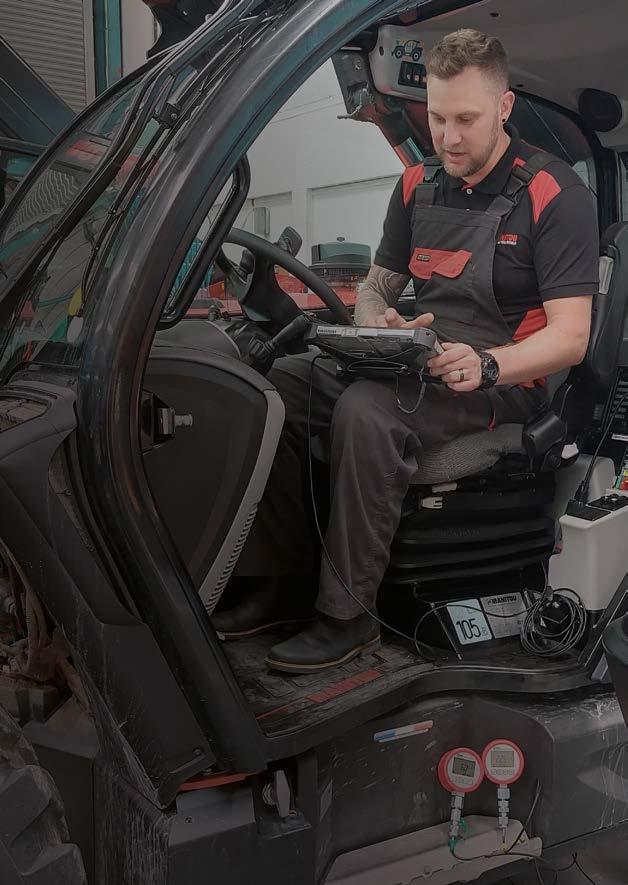
simply
form
Profession
Esther Kimani
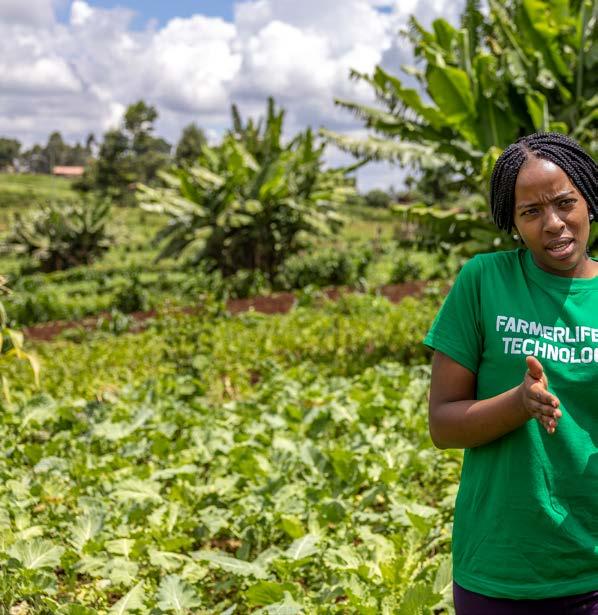
Award winner reduces crop losses with cheap and swift solution
Esther Kimani from Kenya is the 2024 winner of the Royal Academy of Engineering awarded Africa Prize for Engineering Innovation for her development of the Early Crop Pest and Disease Detection Device.
The patented innovation uses continuous image capture and analysis to alert farmers to an infestation and suggest an intervention
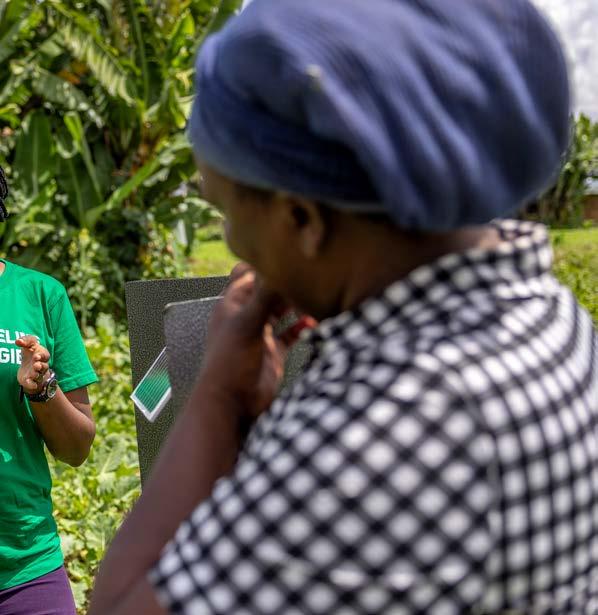
The Early Crop Pest and Disease Detection Device is a solar-powered tool using Artificial Intelligence and machine learning-enabled cameras to quickly detect and identify agricultural pests and diseases. This helps smallholder farmers reduce crop losses through swift remedial action.
Developed by Kenyan computer programmer Esther Kimani, the patented innovation uses continuous image capturing and analysis to alert farmers within five seconds of an infestation and suggests the best intervention.
Current diagnostic methods are
expensive and can take up to three weeks to yield a result. Five million smallholder farmers in Kenya therefore lose on average 33% of their crops to pests and diseases. The situation is aggravated by excessive use of synthetic fertilisers and chemicals, leading to soil degradation.
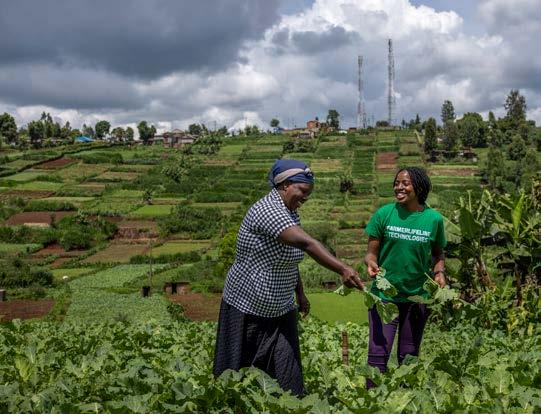
The device comprises a high-sensitivity solar-powered camera module connected to a computer system and mounted on an adjustable stand. The stand reaches as high as five metres, dependent on the type of crop. Kimani and her team have coded a locally hosted database that can detect thousands more crop pests and pathogens.
The camera continuously captures images of crops within 600 metres. It uses computer vision algorithms and advanced machine learning to detect and identify crop pests, pathogens or diseases, as well as the nature of the infection or infestation. The device then notifies the farmer via SMS.
The diagnosis contains information on the crop type,
the pest or pathogen identified, and any other abiotic disorders, such as soil nutrient deficiency. It recommends the type and quantity of pesticides, fertilisers or chemicals to be applied, along with the exact quantity required. This also assists with soil preservation.
Kimani, whose parents were smallholder farmers, developed the Early Crop Pest and Disease Detection Device to address the loss of income from pests and disease, and help increase farm productivity. It can increase yields by 40% and reduce losses by 30%.
It presents an affordable alternative to current detection methods, which involve hiring a drone to scan a farm at a cost of US$100 per hour, or calling out an
agricultural inspector at US$60 per visit. Farmers pay a leasing fee of US$3 per month to continuously monitor their crops.
The device also alerts government agricultural officers to the presence of diseases or pests. It provides weather predictions and recommends the most affordable and appropriate seed and crop varieties for their climate and ecological zone. Data from the 895 devices currently leased is collected onto an agricultural live-tracking data dashboard to monitor patterns, identify trends and inform policymaking.
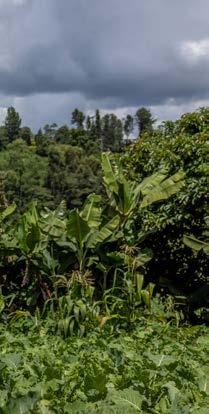

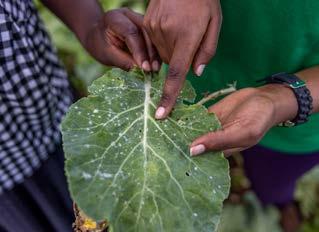
Esther was interviewed by IAgrE and RAE fellow Toby Mottram and Andy Newbold.Listen here https://www.buzzsprout. com/1067353/15423095 for the full episode.
My parents would lose up to 40% of their crops each farming season, which affected our standard of living. We are empowering smallholder farmers, many of whom are women, to increase their income. We aim to scale to one million farmers in the next five years.
Esther Kimani
Apprenticeships explained

The LE-TEC Apprenticeship Working Group have been engaged in the revision of both the Level 2 Land-based Service Engineer and Level 3 Land-based Service Engineering Technician apprenticeship standards. Independent consultant to the land-based engineering sector David Kirschner reports.
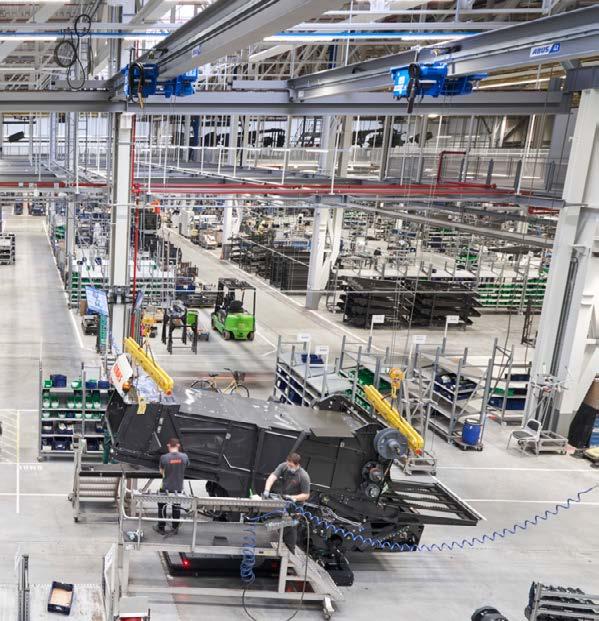
The revisions being made necessary for two reasons, a) The mandatory up-date requirements imposed by (IFATE) the Institute for Apprenticeships and Technical Education, b) The need to produce bespoke land-based engineering apprenticeship standards to ensure the independence of land-based engineering apprenticeship standards.
The Plant and Construction sector who were originally included in the land-based engineering standards now have their own apprenticeship standards. Plant and Construction employers however are not excluded from using the bespoke land-based engineering standards if they consider the new standards align with their requirements.
The review has brought about very important changes that will require both employers and training providers to change their approach to the recruitment and development of apprentices.
The new apprenticeship standards come into force later in the year, but action is required now by those employing apprentices from this point forward.
The new apprenticeship structure will follow a logical progression path where the standalone land-based level 2 apprenticeship * will lead onto a standalone level 3 apprenticeship for those wishing to do so.
* For those who have not completed a level 2 land-based apprenticeship. Providing that you can prove prior knowledge and the correct entry requirements to the satisfaction of the training provider, you could progress onto the land-based engineering level 3 apprenticeship.
In future there will be no possibility to enrol apprentices onto the outgoing level 3 apprenticeship which was an amalgamation of level 2 and 3.
The benefits of these changes are: -
• Employers and training providers can match the apprentice to the appropriate level of apprenticeship
• There is a clear career progression route
• Apprentices can step off the apprenticeship ladder having achieved level 2
• Lower possibility of non-completion of apprenticeships
• Maximises the funding opportunities to secure the viability of future provision
• Increased availability of level 2 provision across England*
• Ensures that Level 3 candidates will not be held back by English and Maths requirements because these will have been achieved at Level 2
• Apprentices achieving their level 3 apprenticeship using the new standards will have undergone assessment at both level 2 and level 3
*Currently not all land-based engineering training providers offer level 2 apprenticeships choosing only to deliver the level 3. In future it is envisaged that more providers will deliver level 2 or alternatively both standalone 2 & 3 standards.
It is important that employers starting apprentices from this date forward enrol them onto the level 2 standard to ensure minimum disruption to the continuity of level 3 apprenticeship delivery in the future.
So, what makes the new standards bespoke and what has changed in the new standards?
Both standards are more comprehensive in their detail. Occupational competency is achieved by delivering the knowledge (K), skills (S) and behaviours (B) required by the apprentice to perform their job role. In both revised apprenticeship standards, the number of KSB statements have been considerably increased
Knowledge, Skill & Behaviour statements have increased by 150%
Knowledge, Skill & Behaviour statements have increased by 112%
These increases being necessary to give greater clarity to the guidance of the learning outcomes required. Being more comprehensive reduces the risk of a variance in interpretation of both what must be delivered and assessed. It also gives the employer a clear picture of what learning is delivered in the ‘off the job training’ which they subsequently are required to bolster in the workplace.
With regards to making the apprenticeship standards bespoke
to land-based engineering, the apprenticeship standards do not just deliver the technical aspect in isolation. The apprentice needs to understand the prime movers, machinery and equipment used within the employer’s area of influence, their operation, application, the soil conditions, crops and customer’s operations etc. This leads onto the interaction of machinery with crops and working environments, how these impact on performance, sustainability and the environment. Land-based technicians are not only expected to diagnose and rectify product faults, they need to understand how to set and apply land-based machinery to attain optimum performance in the spectrum of crops, terrains, climate and weather conditions experienced. When reading the level 2 and level 3 standards take the time to read the knowledge (K) statements these will reveal the knowledge delivered in each standard.
In addition to reviewing the standards, the working group
To view the level 2 reviewed standards, designated ST0242 visit; https://www.instituteforapprenticeships.org/apprenticeship-standards/ land- based-service-engineer-in-revision
The level 3 standards designated ST0243 will be published shortly.
have gone above and beyond the requirement and produced scoping documents for both apprenticeships. These documents will lay out clearly what the training provider must achieve in terms of the knowledge delivered to the apprentice.
The documents will be of interest to training providers, assessment organisations, employers and both prospective and employed apprentices. These documents can be viewed as they become available on;
https://wearelandbased.engineering/wp-content/uploads/2024/06/ Employer-Training-Provider-Assessment-Organisation-Scoping-Information.pdf
https://landbasedengineering.com/ wp-content/uploads/2024/06/ Employer-Training-Provider-Assessment-Organisation-Scoping-Information.pdf
If there are any questions or clarification required from any interested parties, please mail info@letec.co.uk

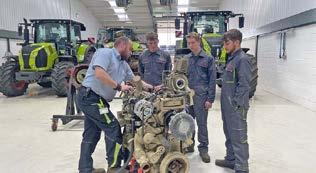
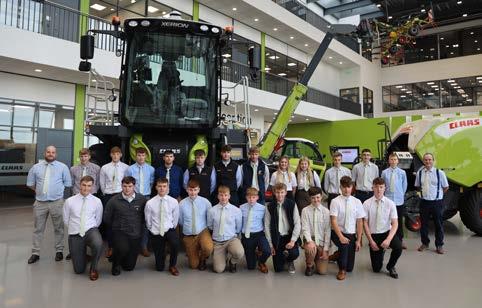
Simon Blackmore
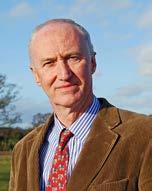

Following the sad news that Professor Simon Blackmore had recently passed away, the Institution’s Robotics Special Interest Group (SIG) convened an online session to pay tribute. Andy Newbold took part.
With participants from around the world the lunchtime session quickly coalesced around the key themes and fond memories which defined our experiences with Simon.
Simon made a name for himself over the last 30 years or so, with the single minded pursuit (for which he is fondly remembered) of a vision of autonomous agriculture.
His work on precision farming, and how this technology translated into per plant prescriptions and the
technology needed to do this, paved the way for the autonomous farming reality we see today.
Both IAgrE President Elect Kit Franklin and Ray King shared their undergraduate experiences with specific reference to doing literature reviews on agricultural robotics in 2011 (When Simon had just joined Harper Adams). This laid the foundations for their subsequent careers with the Hands Free Hectare and Farm projects and the Small Robot Company.
Kit remembered during 2011 in his Masters studying Emerging Engineering Topics. This was discussing with Simon ways which technology might impact agriculture. They discussed that if each seed was GPS logged, machines could subsequently hoe around those seeds pre emergence and reduce chemical use. The FarmDroid is now working in the field 13 years later doing just that!
Professor Simon Blackmore’s work was the bedrock to enable current technology such as the FarmDroid

The editor is immensely grateful for Simons input, from helping host the first Precision Farming Event back in 1996 at Silsoe College, to his robust discussions at various points since.
My vision, throughout my education and career development followed the traditional engineering principles of technologies enabling bigger, faster, wider machines for less people to do more work. Irrespective of the damage to the soils and wider environment.
Simon patiently explained, on several occasions, both personally, face to face, and from the platform of the Oxford Farming Conference, that per plant working with more, smaller, lighter robots was kinder to the soil and used less resources. Whilst this was completely at odds with where I was at, I slowly came around to his view.
Themes:
Simon was summed up in several key points during the discussion:
A visionary – Time and again, the ideas he proposed and worked on, came to life. He saw the future, if not the timeline. He identified the baseline for so much mainstream robotics and autonomous work today.
Uncompromising – Simon knew what he knew, was prepared to stand by it, advocate it and work towards proving his ideas. This in itself didn’t necessarily lead to relaxing meetings, but he had passion and he had great respect from those around him for that.
Warm and engaging – Simon was a people person and saw the other side readily. We were able to agreeably disagree.
The session also heard from several of Simons other students and colleagues from around the world.
The full discussion is available on the Institutions YouTube channel here; https://www.youtube.com/ watch?v=ZKVwaIzlOQg

Ipeleng Maroo-Maseko

The Institution of Agricultural Engineers (IAgrE) hosted a workshop at the Secretariat at Cranfield University in the UK.
Attended by representatives of IAgrE, The Pan African Society of Agricultural Engineers (AfroAgEng) and the European Society of Agricultural Engineers (EurAgEng), The Institution of Agricultural
Engineers (IAgrE) hosted a workshop at the Secretariat at Cranfield University.
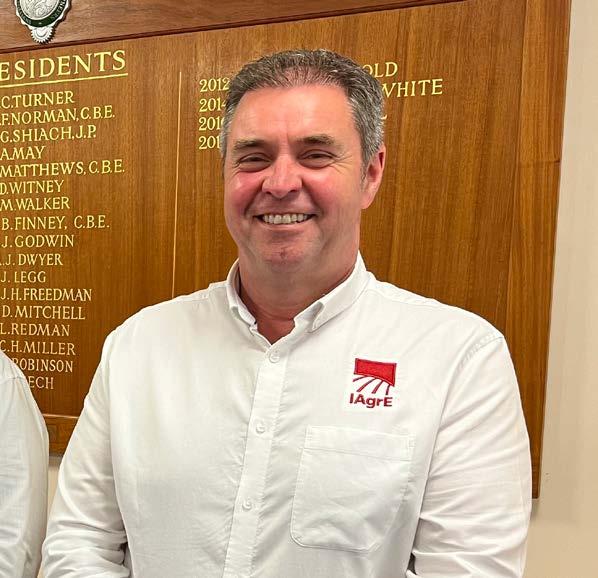
The purpose was to share best practice regarding membership development, recruitment, governance and communications between all three bodies.
Attending on behalf of AfroAgEng was Ipeleng Maroo-Maseko, Vice President of the South African Institute of Agricultural Engineers, EurAgEng Secretary General Andy Newbold Hon FIAgrE and IAgrE CEO Charlie Nicklin.
L-R EurAgEng Secretary General, Andy Newbold Hon FIAgrE, Vice President of the South African Institute of Agricultural Engineers, Ipeleng Maroo-Maseko, and IAgrE CEO Charlie Nicklin
The workshop was part of a week-long Building Better Practice Programme for UK Visit to Professional Bodies, the visit was hosted by the Institution of Agricultural Engineers (IAgrE).
Also attending the workshop was undergraduate Agricultural Engineering student, Izzy Newbold, who was able to share with the group a little regarding her journey to decide on a career in agricultural engineering.
IAgrE CEO Charlie Nicklin commented that ‘ Its great to be able to get together and share best practice across the world.”
Likewise EurAgEng Secretary General Andy Newbold said ‘despite the obvious geographical differences, the common themes and opportunities to collaborate and support each other are substantial for all parties”.
Landwards Conference 2024

Population growth, climate change, renewable energy, sustainable food production, all things we hear all around us every day. The challenges are clear, but it’s evident that working in silos is not going to achieve the results we need. These topics are inherently linked to each other and will require a collaborative, systems-based approach to solve.
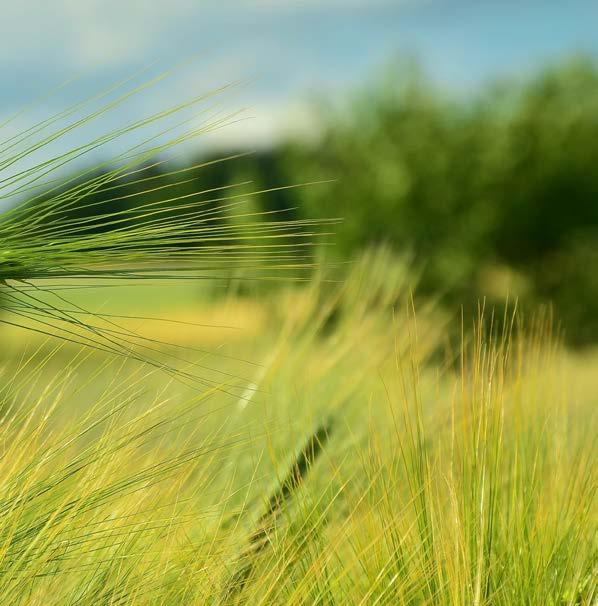
Wednesday 6th November 2024
The conference this year will not focus on the challenges, but on how we can achieve the solutions. By encouraging the thought process between the different stakeholders, we intend to highlight what engineers working in agriculture need to focus on for the future.
The event will culminate in a panel discussion, chaired by IAgrE President Elect, Kit Franklin from HAU and Hands Free Hectare, where our speakers will answer questions from the audience and give you a chance to put your views forward.
The conference will be of interest to a broad spectrum of people, including students, academics, technologists and industry engineers as we explore the future and ensure that through agricultural engineering we secure food safety for all.
Kate Halliwell, CSO, Food & Drink Federation
Kate Halliwell is the Food and Drink Federation’s Chief Scientific Officer. Kate is accountable for the FDF’s food safety, food law and labelling, and diet and health policy briefs.
The role involves extensive liaison with food and drink manufacturing companies to develop cross-industry policy positions and responding to scientific consultations. Previously Kate led the FDF’s diet and health policy work, and before that worked for the Department of Health and the Food Standards Agency on a range of nutrition and legislation policies. Kate Chairs the IFST’s Special Interest Group for Food Science and Nutrition and is a registered nutritionist.
Jelte Wiersma, Secretary General, CEMA
Jelte Wiersma is the Secretary General of CEMA – the European Association representing the Agricultural Machinery manufacturers in Europe. CEMA’s members are 11 National Associations and the biggest seven tractor manufacturers in Europe.
Jelte, a Dutch national, from 2014 he worked as EU-correspondent for the leading Dutch weekly, covering European affairs, including agriculture, and agri-food-related issues. He took on his current role in 2022. He is one of the founding members of the Holland House in Brussels.
Jake Pickering, Senior Agricultural Manager, Waitrose & Partners
Jake is currently the Senior Manager for Agriculture at Waitrose where he leads the team that is responsible for setting and implementing the Waitrose agriculture strategy. His responsibility stretches across the livestock, dairy, fresh produce and horticulture supply chains producing Waitrose products.
Kieran Walsh, Agronomist, Grounded Agvice
Kieran, has a practical background in farming, working on farms from a young age, then moving into farm management before a career move into agronomy in 2015. Starting as a distribution agronomist for 6 years, before going independent in 2019, as a regional agronomist for a large farming company. Kieran is now co-founder and director of Grounded Agvice, and provides tailored independent agronomic advice addressing customer issues by seeking system-based approaches outside the normal parameters of crop agronomy. Their innovative approach supports farms and land owners across the south of the UK.




Livestock Sector View
Claire
Morgan-Davies, Livestock Scientist, SRUC
Claire is a Livestock Systems Scientist, originally from Burgundy, who graduated from France as an ‘Ingénieur en Agriculture’ from UniLaSalle Beauvais in 1995. She joined the James Hutton Institute in Aberdeen, worked as a sheep and cattle grazing modeller, and as the administrator of a European Network on animal fine fibres. At the same time gaining an MSc in Land Resource Management at Cranfield University.
She joined the Hill and Mountain Research Centre at SRUC in 1999, looking at evaluating the introduction of a native woodland on a hillside, whilst keeping sheep production. This project included modelling work and participatory research with hill farmers.
Claire then focussed on livestock systems comparison and multi-disciplinary research. In 2006 she embarked on a part time PhD at the University of Edinburgh, whilst carrying on as a research scientist at the Hill and Mountain Research Centre. Her PhD studies focused on the change in the EU Common Agricultural Policy of decoupling support for livestock, and on how it affected husbandry practices and land use in the Scottish hills.
She developed an interest in smart farming for sheep systems, and in how technology could help hill farmers to be more efficient. Her research focused on sheep systems and Precision Livestock Farming, as well as on-farm labour. Claire has published more than 70 journal and conference articles, as well as participated in many outreach events with farmers and stakeholders, both in the UK and abroad.
James is an arable farmer from the edge of the Cotswolds who is pursuing his goal to both improve the quality of his soils and be more precise in every input. This has led to a successful and profitable business and also industry recognition with roles at the AHDB and NFU in the past. He farms 3600ac in a family partnership with a mixture of owned, tenanted and contract farmed land and he worked alongside Clive Blacker and Yara with their N sensor for 5 years covering all aspects of precision farming with an emphasis on nutrient management.
He is in a unique position of being able to practise what he preaches and has proved many times over the benefits of precision farming. His attention to detail in all aspects of arable farming has led to a steady increase in yields despite the limitations of drought prone Cotswold Brash Soils. At the same time he is ranked in the top 5% of farmers for low growing costs and uses nearly half the average amount of diesel per ha despite having ploughing in the rotation. Recent investment has seen a switch to 12m controlled traffic and the use of a camera guided hoe is being investigated. His passion for improving his soils has led to the re-introduction of livestock onto the farm with both sheep and cattle during the winter. These, combined with cover crops and organic manures, have led to him being at the forefront of regenerative farming.
Date: Wednesday 6th November 2024
Location: Rothamsted Conference Centre, Harpenden AL5 2QJ How do I book? https://iagre.org/events/2024-conference


Lunchtime Lecture
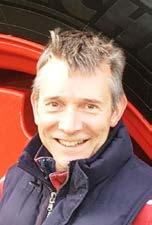
Earl Managing Director
TGMS & PSD
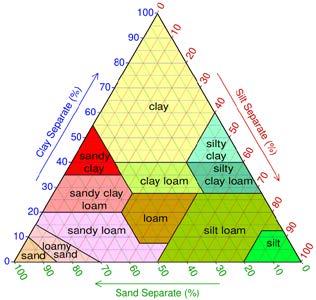
Dr Richard Earl, managing director for TGMS and PSD gave an insightful presentation in a recent lunchtime lecture for the Institution.
Soil and water principles
A primer for all engineers, Richard focussed on the basics, starting with soil texture. Taking listeners through particle size, and the impact on the generally poorly draining soils of the UK.
This then inevitably led to a discussion around water movement and soil-water engineering. Soil texture and particle size particularly influencing surface area and pore space, and hence soil water capacity.
This lead to an illustration of how water moves through coarse sand, the principles behind this and the implications for drainage design.
Pitch design
Applying the above principles to
sports pitches shows the importance of a designed pitch, which handles rainfall and extreme weather events, whilst moving water away from the surface to the drains.
Whitgift School, Croydon –a case study
The presentation then moved to show how the application from first principles revolutionised the historically very poor playing fields of the school.
The first step was to conduct an EMI/ topographical survey of the field, to see what was going on, beneath the surface. In conjuction with comparison to flood risk maps of the area, it was clear that the site had long standing drainage issues. In no small part due to part of the site
being in a historical flood plain.
The site was loamy sand soil over chalk, which did not tend to drain well, and held the water at or on the surface in winter. Chalk is sedimentary bedrock, formed between 93.9 and 72.1 million years ago. Its been around a long time and isn’t particularly conducive to drainage.
The proposed design included 80mm lateral drains at 3m intervals, with sand bands at 1m spacings above and at 90 degrees to the lateral drains, to encourage water flow away from the surface. The whole site also had a linear soakaway installed to run the water away from the pitch.
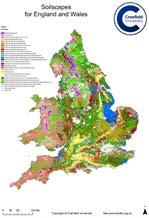
On the IAgrE’s YouTube channel there is the full back catalogue of lunchtime lectures.
A few of the most recent include:
Andy Littler has spent 45 years in quarrying and quarry products and along the way developed a passion for creating natural habitats at his operations, both during and after extraction. The talk focused on practical examples of these works and was visual rather than text heavy. A section has been on earthmoving plant and crushing to slant the subject to its audience. During his career he has been involved in ground calcium carbonates, agricultural lime, silica sand and managed “Tarmac Topsport”, suppliers of sports sands, which some members may be familiar with. Andy Littler is a Graduate Geologist, Chartered Mineral Processing Engineer and Member of the Institute of Quarrying.
This is a very brief summary of the lunchtime lecture. Head to; https://www. youtube.com/ watch?v=7Ejw040LvVw to enjoy the full presentation.

In retirement he gives free on site advice, talks and runs courses on the potential to increase biodiversity in working and closed mineral extraction sites. Andy lives on the Dorset coast where he practices what he preaches in his unkempt wildlife garden.
Seamus Higgins, AFIChemE, FHEA, Associate Professor of Food Process Engineering at the University of Nottingham.
As part of the global food system, food engineering has a particular responsibility to society. Food and its production matter for every single individual on this planet —It always has!
While the global food industry has had many successes over the past 50 years in terms of scalability and offering abundant food supply to many parts of the world, it has not happened without consequence and controversy.
A fundamental rethinking and radical redesign of the entire food chain and its practices is required.
By linking a very simple definition of engineering as being “to make things or to make things better” with the discipline of food engineering, perhaps the point has been lost by more recent numbers-orientated management that a food engineer’s key role has always been, as proven over past millennia, to consistently re-engineer food systems to achieve beneficial change.
This seminar was an overview of some of the Environmental & Sustainability challenges the industry is now facing and presented some practical steps, from an engineering perspective, as to how the industry can embrace future change and adapt to implementing better ESG (Environmental, Social and Governance) goals.
Douglas Bomford Trust
On 26th June, Professor Paul Miller (DBT Emeritus Trustee) attended the Cranfield University School of Water, Energy and Environment Prize Giving Ceremony.
Marine Perard was awarded The Douglas Bomford Trust Award for the best student on the Environmental Management for Business MSc. Marine was “honoured to receive such a prize.”
Marine is planning on continuing her studies in continental Europe. Amala Tony was awarded the Douglas Bomford Trust Award for the best student on the Future Food Sustainability MSc. To quote Amala “I am delighted to know about the prize.”
Amala is hoping to undertake a PhD in the UK.
Paul was impressed by both prize-winning students who were hosted by Professor Jane Rickson (DBT Trustee and ex-President of the IAgrE).
From 30th July to 1st August, 17 Year 10 students (most of who were from non-agricultural backgrounds) attended a 3 full-day residential Smallpeice Trust Agri-Tech course at Harper Adams University. The event was sponsored by the Douglas Bomford Trust and the NFU Mutual Charitable Trust. The course was delivered by Harper Engineering Department staff Sam Wane and Tom Underhill (Senior Lecturers) and Tom Williamson (Technical Support).
The event started with a key note lecture by Kit Franklin (IAgrE President Elect and Harper Adams
It’s been a busy few months for the Douglas Bomford Trust. Technical Secretary David White reports.
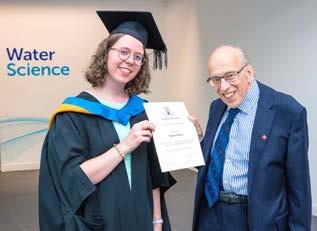

University Senior Engagement Fellow) on precision agriculture and the need for autonomous systems. Other lectures included autonomous navigation and sensors.
The course was mainly a hands on activity, run in small teams, to programme an ATLAS Robot and trailed spot weeder so that the combination ran parallel to a wall and eliminated red coloured weeds
(but left green and yellow coloured crop) drawn on a piece of A4 paper. The ATLAS Robot was conceived and designed by Sam Wane as a low cost, hands on teaching and research platform. The spot weeder consisted of “flat pack” pre-cut panels (designed and made at Harper) that students had to assemble (and, if necessary, adjust) to produce a trailed spot weeder unit. On the final day, a competition was held to see how well each team’s combination eliminated red coloured weeds by drawing a line through them using a whiteboard marker pen (attached to the weeder) over a set course. The weeds were sensed by a minature HuskyLens camera mounted on the front of the ATLAS Robot with inbuilt AI that the students had trained to recognise red coloured weeds. Everybody was impressed with the results.
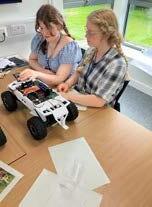
During the course, students received presentations by Gregor Belcher (NFU) and Richard Robinson (DBT Trustee). Richard has responsibility for selecting Arkwright Scholars funded by the DBT and being their Mentor.
Thank you to Smallpeice Trust staff
Rachel Jenkinson (STEM Engagement
Specialist), Emma, Abi and Colin for making the course run smoothly and providing pastoral care throughout the course, and Georgina Hare, Smallpeice Trust Third Sector Partnerships Manager who co-ordinated arranging the course.
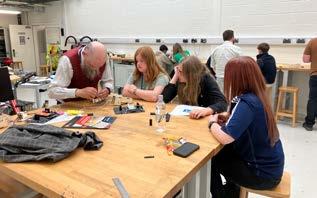
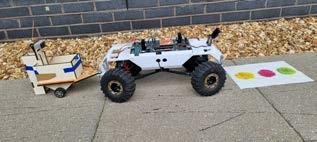

For further information, see the Trust’s website: www.dbt.org.uk or contact the Technical Secretary David R White via: enquiries@dbt.org.uk
You can also follow: @BomfordTrust on ‘X’ and on LinkedIn, for news of interesting events, opportunities, or developments.
Field visit to Copys Green Farm, North Norfolk
Report by David Seccombe
Farming and Sustainability
April provided members and guests of the East Anglia Branch with the perfect weather for a field and site visit to Dr Stephen Temple’s Copys Green Farm, North Norfolk. Stephen is an East Anglia Branch member and previously was Branch Chair.
Farm sustainability is not just about use of special technologies or techniques, it is about the whole approach to the farming operation as well as attention to detail on each aspect.
Stephen quickly identified that sustainability is the underlying ethos and principle in establishing a dairy farm that is in tune with the environment while ensuring there are financial benefits. Balancing profit margins has led to innovative solutions from field planting through to cheese production.
The farm produces as much livestock
feed as possible on farm, including lucerne forage, maize silage, grass silage, barley and beans. In terms of innovation, Stephen is currently investigating:
• growing maize and climbing beans together for higher protein, however, this is on hold until better seed treatment and herbicides are available.
• Mixing winter barley varieties to look for synergies between varieties.
• Winter beans and oats grown as a bi-crop (“boats”) for animal feed.
All the maize is clamped together, but the top, sides and bottom of the clamp are fed to the digester, saving the best for the dairy herd. This way, the farm can deliver the right environment for a healthy and profitable dairy operation.
After the introduction to the farm, we drove to an outer field to see a demonstration on how crop strip till and drilling can be done in a single pass based around four farm implements joined to a Fendt 720 tractor. On the front is a crimper roller to chop and mulch all standing vegetation. On the back is a soil cultivator to prepare the bed for the attached direct seed drill which also has a pre-emergent herbicide sprayer following. Stephen plants around 95ha of forage maize using this planting configuration and has achieved good yields to be used as fodder for dairy cattle and the straw used as a digestate in the AD plant.

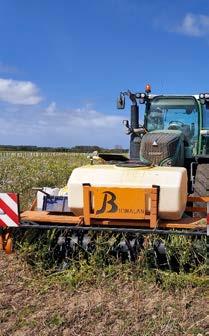

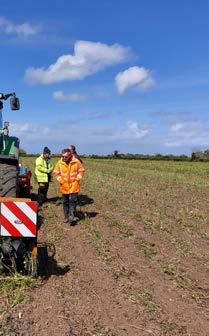
mounted crimper roller to mulch standing vegetation...
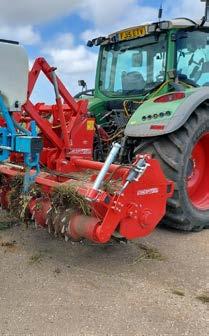
sprayer.
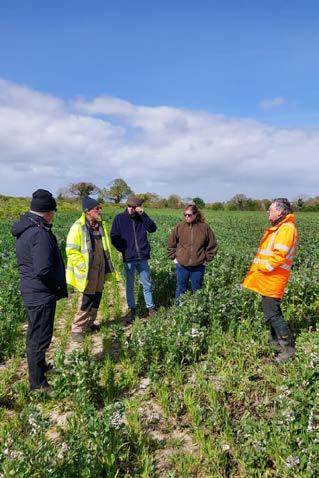
Across the road into another field, Stephen has found success in companion planting around 9ha of oats with winter beans. By planting these crops together then fortuitously both plants reach maturity and can be harvested at same time – Stephen noted that the oats brings forward the beans by a couple of weeks. After harvesting, both the barley and beans are used as a protein mix for the dairy herd. Back to the main farm we were shown the many ways Stephen is looking at achieving a sustainable environmental footprint. It was noted that anaerobic digester plant is the heart of achieving a sustainable dairy farm.
The Marches Biogas uses a digester tank of 800 m3 with a residence time of 40-50 days at a temperature of around 37-42oC. The daily feed includes about 7 tonnes slurry, 8 tonnes maize or lucerne silage plus whey from cheesemaking.
The products from the AD plant include:
• Digestate is separated into solid and liquid components.
• Liquor stored in 2 two lined lagoons and then applied by trailing shoe tanker.
• Solids carted to field for
land spreading to make use of all nutrients.
• Methane gas is fed into an IET
Combined Heat & Power unit which produces 170kW electrical power and 198kW thermal energy at peak.
Waste to farm-made energy
Around 70% of the electricity produced on site goes to the National Grid. The remainder of the electricity produced provides sufficient power for an irrigation pump, pumping digestate to field by underground mains avoiding road traffic, three electric farm cars, a ride on mower, and an electric Gator for herding cows. Most of the equipment has been converted onsite from fossil fuel to green energy.
The heat produced from the engine cooling water is utilised to eliminate fossil fuel by providing hot water and heat to support four houses, office, workshop as well as providing heat for cheesemaking heat and grain drying.
Pasture improvement
Producing digestate as high-quality consistent fertiliser reduces risk of diffuse pollution and risk of danger of damage to Stiffkey River and is compliant with the requirements of the Nitrate Vulnerable Zone.
Farmyard manures are composted to incorporate ammonia which reduces emissions and make a better soil improver.
The groundwater borehole supply is dosed with good bacteria (Pruex) to fight infectious bacteria to maintain a high health status dairy herd and reduce the use of antimicrobials. The farm operates as a team, with the herd manager, the vet and the nutritionist regularly working together to improve health and nutrition. There is routine testing for diseases such as Neospora, Johne’s and mycoplasma, and vaccinate where possible to prevent diseases such as lungworm and ringworm.
The dairy herd is almost pure pedigree Brown Swiss of about 130 cows and 60 youngstock. Calving is
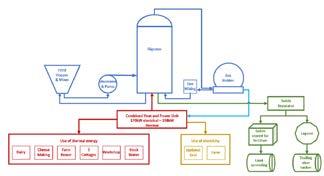
all year round which are reared in outdoor calf hutches to improve calf health. About a third of the milk is used for cheese making, the rest is sold wholesale to Arla. The cows are winter fed on a Total Mixed Ration based on maize, lucerne and grass silage, and out at grass in summer, topped up with concentrate in the parlour. Milking is twice a day and is currently averaging 7900 litres a year (4.18% butterfat, 3.44% protein).
Trading as Mrs Temple’s Cheese the farm produces award winning cheeses, receiving many Gold Awards over the last 10 years. It was interesting to note that the Temple family, who have been farming in the area since 1912, were renowned for the award-winning Holstein Friesian herd have now changed to Brown Swiss, a breed which is more fertile and less susceptible to infection. An additional reason is that Holstein Friesians produce milk with a high α-kappa casein content which produces more whey (and therefore more waste) compared to the Brown Swiss milk with a higher β-kappa casein that produces a firmer cheese. It is this attention detail which resulted in Mrs Temple’s Cheese winning a Gold Medal at the British Cheese Awards.
While the Binham Blue (a creamy blue cheese) is the main stay of production, there is a range of cheeses from pressed matured through to rind washed soft cheese.
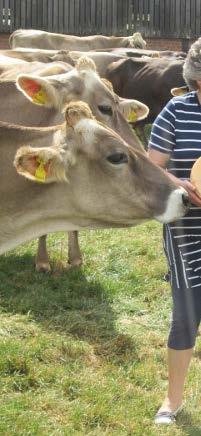
At the end of the visit Stephen provided a sample of all the cheese, much to our satisfaction and enjoyment. While all the cheeses were delicious, the author’s favourite was a smoked Walsingham matured cheese. When in North Norfolk I would recommend you grabbing a bag full of Mrs Temple’s Cheese (there is a Deli in Staithe Street, Wells-next-the-Sea, which has a full range of Mrs Temple’s Cheese).
Summary
It was a pleasure to visit an Agricultural Engineer using his skills and innovative thinking in farming operations to drive forward sustainability, continuous improvements and environmental benefits.
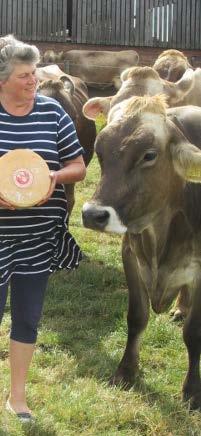
The Institution has a fresh newsletter provider and is using MailChimp.
Please check your Junk for the next couple of weeks and add; secretary@iagre.org and communications@iagre.org to your safe senders list.
If you don’t receive an IAgrE newsletter by the end of September please get in touch.
East Midlands branch
September visit to Sleaford Renewable Energy Plant
More information to follow. ...
10/09/2024 - To be confirmed Kirkby la Thorpe, NG34 9GH
Lunchtime Lecture
Integrating renewable energy
Integrating Renewable Energy Technologies to Serve Rural Communities – Principles, Challenges and Opportunities
Miles Messenger, Energy Engineering Director at Equans will talk about their project with Cambridgeshire County Council linking a high voltage underground cable between a 30MW solar farm and a district heating system for a Cambridgeshire village.
Details of the joining instruction will be sent to members but if you would like to attend please contact Sarah who will be pleased to send you the details.
10/09/2024 - 1pm-2pm Online via Zoom
West Midlands branch
Technical talk - simulation for agricultural vehicles & precision farming
Speakers: Steven Child, Senior Technical Sales Manager | Claudio Maroni, AgriSI product manager
AgriSI is a simulation platform designed to address two aspects of agricultural machinery: vehicle dynamics (in co-simulation with IPG CarMaker/TruckMaker) and precision farming technologies.
Contact westmids@iagre.biz for the Zoom details
East Midlands
Visit to British Geological Survey
Details of visit will be confirmed nearer the date. ...
08/10/2024 - To be confirmed British Geological Survey, Keyworth, Notts, NG12 5G
Visit to the National Propulsion Showcase Centre at Warwick University
Report by Stuart Martin
We all know fossil fuels are limited. We don’t know how limited but we all agree that it is a good thing to aim for using alternatives and especially renewable fuels.
So what are we doing about it?
This department is researching the alternatives.
Whilst there is a need for basic research that is no good if it is not applied to real life.
We were told of how their work was organised and from where the funding came from and where they
were using and developing expertise. During the visit we were shown examples of what they were doing and examples of how their work was applied.
The case study they were highlighting in particular was their role in the development of a New Holland T6 tractor which is the world‘s first commercially produced methane powered tractor. Running on biomethane fuel made from recovered cow dung, the tractor could help save farmers money, reduce GHG emissions and support sustainable UK farming of local produce as well as reducing both particulate and CO2 emissions when compared with a conventional diesel fuelled tractor.
This was an established procedure
for the production of methane from on farm bio-digesters that is used for power generation. Their big step was to be able to use it in a mobile application and in a way that the tractor could be marketed.
So far it has been a very successful development.
But they are doing a lot more see their website; https://www.apcuk.co.uk/
More details of the Methane Tractor project can be found here: https://www.apcuk.co.uk/impact/ case-studies/manure-powered-tractor/
Their practical based pioneering work is certainly something to look out for.
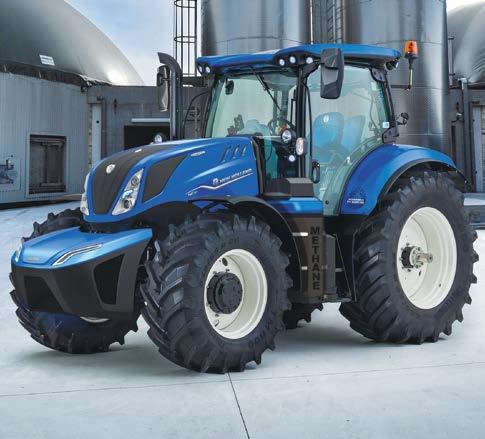
to 3 Shires Farm Tractor & Machinery Collection
Report by Stuart Martin
Members of West Midlands group along with family members and friends had the privilege of visiting Martin Wadland’s private collection at 3 Shires Farm in June.
The fantastic collection of machinery and equipment has been accumulated by Martin during his career in and following his retirement from farming. Most of the collection has been sourced from the local area and has benefited from Martin’s rectification, restoration and preservation.
Martin was assisted during our visit by his friends, Richard and Janet. Richard was very knowledgeable about the items in the collection, and we learned, for example, about the origins of the phrase “Looking for a needle in a haystack”
The most notable feature of Martin’s collection is his Allis Chalmers tractors. To be perfectly honest there were too many to count!! Probably over 30!! lined up down two sides of Martin’s barn – two deep down one side. These gave an insight into the brand’s development over the years. Notable among these was a 1942 Cletrac crawler and a 1947 WC which had been converted to a roller.
Beyond the impressive line-up of
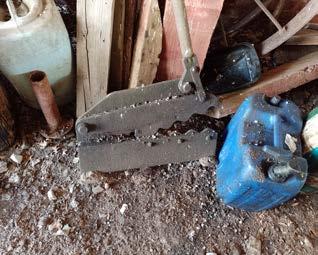
Allis Chalmers tractors, my eye was particularly taken by a gypsy-style trailer caravan which was built onto a trailer chassis at the farm over the winter of 2008 / 2009. This was to be found amongst an impressive collection of horse drawn carts of various types.
Amongst the overwhelming quantity of fascinating treasures was a collection of horse drawn ploughs and many agricultural hand tools including the hay needle, collections of sack trucks and milk churns and a guillotine for cutting corrugated sheet.
Also noteworthy were some models of horse-drawn carts made by Martin which won prizes at local shows.
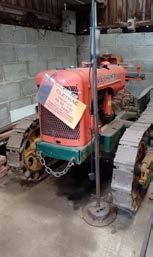
In past times when hay was piled up in stacks to dry it was common to test the dryness of the stack by extracting a sample from the middle of the stack. This was achieved using a long needle shaped rather like a crochet needle – with a hook on the end. The needle was pushed into the haystack and rotated to catch a sample of hay in the hook. The needle was then withdrawn to examine the sample.
Longer needles were made in two parts held together by a screw thread. If the needle was pushed in and rotated clockwise the threads would tighten and all was well. If the needle was rotated the wrong way the parts of the needle separated, and the user was faced with the challenge of “looking for a needle in a haystack”
True or folk lore - either way it makes a nice story.
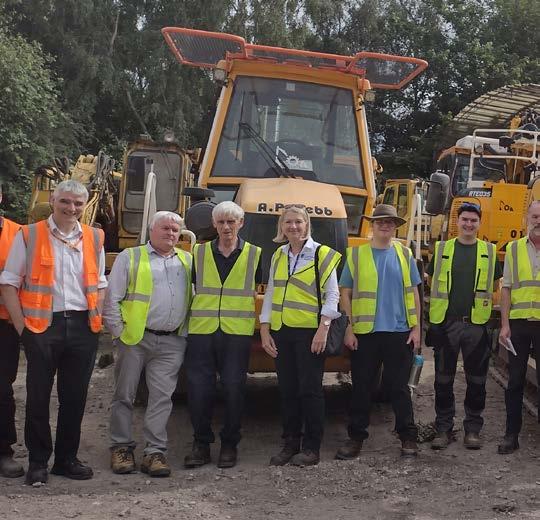
Visit to AP Webb
Report by Dave Clare
On the afternoon of Friday 5th July thirteen members from the Wrekin Branch met in Stafford to visit AP Webb Plant Hire and its sister company Rail Ability.
We were hosted by Ian Harrison the HR Manager for both companies. AP Webb is a major contractor/ supplier of specialist plant to the rail construction industry, supplying
both machinery and operators. Rail Ability specialises in the manufacture of plant for the rail construction industry, the majority of which goes to AP Webb, but it does supply to other plant operators.
The visit started with a talk by Paul Helks the Compliance Director at AP Webb. There are approximately 100K miles of track in the UK that need maintaining, it being on a mixture of wood, concrete and now plastic sleepers. AP Webb run a varied fleet of machines from excavators
with specialist attachments for rail replacement, ballast packing and replacement, to specialist cherry pickers for overhead electrified line work. There are both wheeled and tracked machines, and most are also able to operate on rails as well with drop down guide wheels.
The industry is highly regulated and also needs to meet tight timescales, therefore all their operators are full time employees. As well as the usual operator training found in the construction industry, the operators

must have additional training and medical checks before being allowed to work on rail sites. As well as a plant supplier AP Webb are also a training supplier.
The majority of machinery used is supplied by Rail Ability, with most being modified construction machines with specially made attachments. The modifications are extensive to allow the machines to be used on rails, carryout specialised operations, and comply with higher safety standards, this means the
machines are required to go through CE marking again. Some of the safety systems applied to the machines are to restrict movement so they can’t reach over other lines or hit overhead structures.
After the talk we headed to AP Webb’s yard to look at some of the typical machines used. There was an array of machines to look at, but the yard was relatively empty. Ian pointed out that it being a Friday, most machines would be out on-site as the majority of rail maintenance
is done over the weekend, and the yard would be full again by the end of Monday.
The tour was due to move on to Rail Ability’s manufacturing facilities, but due to last minute operating difficulties the tour could not go ahead, but Ian invited the group back in the future.
An enjoyable and informative afternoon was had by all, and we look forward to returning to see Rail Ability.
1/05/24 to 31/07/24
Dr Junfeng Gao (Scottish Region)
Mr Abdualhafith Shareef (Saudi Arabia)
Mr Nicholas Thompson (Wrekin)
Mr James Thomas (East Anglia)
Miss Rhian Griffith (Wrekin)
Affiliate
Mr Adrian Locke (Ireland)
Mr Paul Burrows (West Midlands)
Technician
Mr James Turner (Western)
Mr Stephen Maloney (Scottish)
We have recently learned of the death of the following members and we send our condolences to their family and friends:
Professor Simon Blackmore FIAgrE
Professor Blackmore joined the Institution in November 1985 as an Affiliate. He transferred to Associate Member in March 1986 and then to Member grade in September 1991. In November 1991 he gained Chartered Engineer Registration which he held until he retired in 2020. In December 2001 he then transferred to Fellow grade. Professor Blackmore was a long-standing member of our Institution with nearly 40 years of membership.
Eur Ing John Munson FIAgrE
EurIng Munson joined the Institution in March 1962 as an Associate Member. He then transferred to Member grade in October 1972 and then went on to Fellow grade in October 1987. He was a Chartered Engineer through the Institution of Mechanical Engineers. EurIng Munson was a long-standing member of our Institution for over 60 years.
Mr Peter D Russell IEng MIAgrE
Mr Russell joined the Institution in December 1955 as a student member. He transferred to Associate Member in August 1964 and then on to Member grade in January 1969. Mr Russell gained his Incorporated Engineer Registration with us in December 1976 and was a long-standing member of our Institution for nearly 70 years.
Member
Ms Ellis Ward (East Midlands)
Mr Adam Kemp (East Midlands)
Mr James Szabo (East Midlands)
Associate Member
Mr Alex Lowe (West Midlands)
Miss Lois Maren (South East)
Mr Oladapo Odetayo (East Midlands)
Miss Melany Rorke (Ireland)
Mr William Evans (Wrekin)
Technician
Mr David Goodchild (Wrekin)
Miss Rhian Griffith (Wrekin) –transfer of registration from IMechE
EngTech
Mr David Goodchild (Wrekin)
April - June 2024
John Joseph Madigan MIAgrE 1 August 2024
Peter Ian Ross MIAgrE 1 August 2024
Timothy John Ross Havard MIAgrE 2 August 2024
John Llewelwn McIver MIAgrE 2 August 2024
John Barrie Hudson MIAgrE 20 July 2024
Alan Walter Moore MIAgrE 20 July 2024
Mark Adrian Andrews MIAgrE 8 July 2024
Maxwell Mutema MIAgrE 19 July 2024
Neil Elsender MIAgrE 2 August 2024
Glenn Michael Dearsley AMIAgrE 2 September 2024
George Edward Painter AMIAgrE 2 September 2024
Rupert Theodore Hingston Caplat MIAgrE 2 September 2024
Tributes paid to Robert Lockhart – champion for the industry and NFU
Robert joined IAgrE as a student in March 1976 and upgraded to Affiliate in May 1984 and then Member in 1997, sadly he died 2 years before his 50th anniversary with the Institution.
The farming community has paid tribute to a Staffordshire farmer known for his in-depth knowledge who championed the industry over many decades.
Staffordshire farmers and those from across the country have remembered Robert Lockhart, of Drayton Bassett, who died on 22 June after being diagnosed with cancer.
The husband, father and grandfather was an instrumental figure in agriculture and the NFU at a national, regional and county level and has been described as a man who was unassuming but gave his utmost to support the industry, champion it and strive for a better deal for family farms.

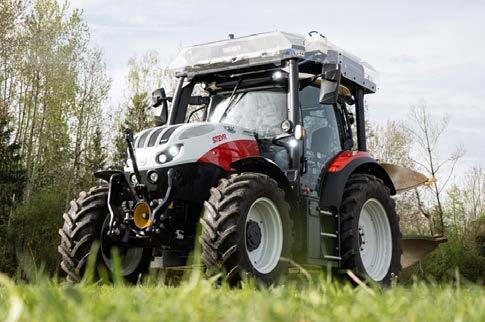
• TU Wien fuel cell tractor project is supported by CNH
• FCTRAC based on adapted STEYR® 4140 Expert CVT
• Complemented by BioH2Module for end-to-end sustainability
Developed in collaboration between engineers at the CNH tractor plant in St. Valentin and TU Wien, an innovative hydrogen fuel cell-powered STEYR® concept tractor has recently made its public debut.
The FCTRAC was developed as part of a national research project funded by the Austrian Research Promotion Agency (FFG) and led by the Institute of Powertrains and Automotive Technology (IFA) at TU Wien. Based on a standard STEYR 4140 Expert CVT tractor, the development was a collaborative effort between CNH’s St. Valentin based engineering team and their project partners from science and industry, who worked together to design, create, homologate and test
the tractor and its hydrogen fuel cell power unit.
The STEYR FCTRAC hydrogen fuel cell tractor project aim was end-to-end sustainability, via a BioH2Module developed to complement the tractor. This produces hydrogen from biogenic raw materials and residues, meaning 15-16 kg dry biomass is needed to produce hydrogen equivalent to around 3.5 l of Diesel. The power unit only emits water vapour, and there is no compromise in terms of power – with the tractor meeting the demanding requirements of agricultural work in the same manner as a diesel-powered equivalent.
The FCTRAC, which has a 14 kWh high-voltage battery and 400 V electrical system, develops 95 kW, matching its diesel equivalent. The fuel cell and electric drive systems take the place of the diesel engine, while the fuel tank is replaced by a compressed hydrogen storage system and a high-voltage battery.
“The STEYR FCTRAC attracted considerable attention recently at the Schönbrunn Palace in Vienna, venue for the Austrian State Prize for Technology awards, for which it was nominated in the ‘Mobility Technologies category, a section which honours groundbreaking Austrian technical innovations,” says Marco Lombardi, Head of Case IH and STEYR brands EMEA.
“The category focuses on the research and development of sustainable, climate-neutral and intelligent mobility technologies. We were delighted to play a crucial role, together with TU Wien, in developing the FCTRAC, and it was an honour to participate in the ceremony. This tractor not only embodies the sustainable future our industry strives for, but also solidifies CNH’s position as a leader in alternative fuel innovations. We are looking forward to further working on this very exciting project,” he concluded.






























































th
W ednesday 6 Nove mbe r 2 024
V enue: Rotha ms te d C onf ere nce C ent re, H arpen de n
Population growth, climate change, renewable energy, sustainable food production, all things we hear all around us every day. The challenges are clear, but it’s evident that working in silos is not going to achieve the results we need. These topics are inherently linked to each other and will require a collaborative systems based approach to solve
O ur conference this year w ill not fo cus on the challeng es, but on how we c an achieve the s olutions B y encouraging the thought pro ces s b et we en the dif ferent st akehold er s, we intend to highlight w hat engine er s working in agriculture ne ed to fo cus on for the future
The event will culminate in a panel discussion, chaired by IAgrE President Elect, Kit Franklin. Our high profile speakers will answer questions from the floor and give the audience the chance to put their views forward
This conference will be of interest to a broad spectrum of people, including students, academics, technologists and industry engineers as we explore the future and ensure that through agricultural engineering we secure food security for all
Thank you to our Sponsors:


Director Government Affairs, AGCO Ltd and the President of IAgrE.
Kate Halliwell, Chief Scientific Officer, Food & Drink Federation will highlight the challenges.
Jelte Wiersma, Secretary General, CEMA (European Agricultural Machinery Association) will provide what the policymakers want from agricultural engineering.
Jake Pickering, Senior Agricultural Manager, Waitrose & Partners will give the food retailers perspective on what they want from agricultural Engineering.
Kieran Walsh, Agronomist, Grounded Agvice will look at what agronomic service providers need from agricultural engineering.
Claire Morgan-Davies, Livestock Scientist, SRUC will explain what agricultural engineers can do for livestock husbandry.
James Price, Perdiswell Farm, Oxfordshire will give a regenerative farmer’s view and will outline the farmers’ requirements.
Sponsorship packages for this prestigious event are available if you are interested in partnering with us you can find out more here: iagre.org/conference-sponsorship Book your place here: iagre.org/events/2024-conference